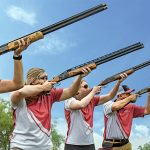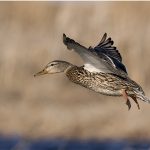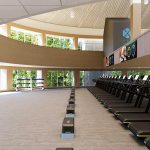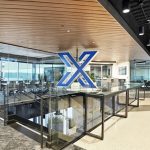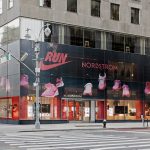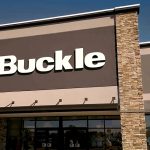Easton-Bell Sports, Inc. continued to grow earnings faster than sales in the second quarter ended July 3 as operating income surged to $20.1 million in the quarter, up 36.0% from $14.8 million in the second quarter of fiscal 2009. Results were buoyed by favorable exchange rates, particularly between the dollar currencies in the U.S. and Canada, where Easton-Bell sells much of its hockey equipment. That trend, however, is likely to reverse in the back half of the year based on comments from company management.
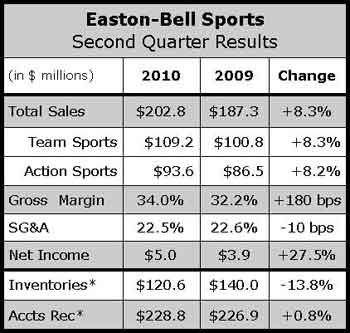
Second quarter net sales reached $202.8 million, up 8.3% over the $187.3 million reached in the second quarter of fiscal 2009.
“While we are pleased, we are cautious about the balance of the year and going into 2011,” said Paul Harrington, company president and CEO. “The increase in second quarter sales at higher margins combined to increase our operating leverage and allowed us to fund investments in new product introductions. With consumer spending still uncertain in the near- to mid-term these investments will be critical to growing future market share.”
Harrington said consumers are moving back toward higher price points in cycling, but continuing to move down market with the team sports purchases. “It’s a mixed bag,” Harrington said of consumer behavior. Regardless, Easton-Bell will build inventory “a little” going into the back half to avoid losing sales as it did in the first half.
Team Sports division net sales increased 8.3% to $109.2 million due to increased sales of football, baseball and softball equipment, and NFL collectable football helmets, partially offset by lower sales of ice hockey gear. Harrington said Riddell’s Revo Speed and Speed Classic football helmets drove double-digit growth in that category despite budget cuts at many high school football programs. He said promotions targeting youth sports by The Sports Authority bore fruit and the company boosted direct sales by 32%. Demand for the company’s baseball and softball products was “substantial,” but Easton was unable to fulfill some orders for hockey skates and sticks due to internal design delays and late deliveries out of China. Easton is now spreading production of its hockey sticks over a wider sourcing base to avoid capacity issues in the future.
Harrington also disclosed that Riddell has negotiated an agreement with its competitor Schutt Sports (see story page 8) that will allow Schutt to continue shipping football helmets that infringe on Riddell’s patents to ensure teams get gear in time for the upcoming season. Just last week a federal grand jury in Wisconsin found that Schutt Sports Inc.'s DNA and ION football helmets infringed on the concussion reduction technology features of the Riddell Revolution family of football helmets. The jury awarded Riddell just under $30 million in damages.
Action Sports division net sales, which includes the Giro, Bell and Easton Cycling brands, increased 8.2% to $93.6 million due to increased sales of cycling helmets, accessories and wheels and snow sports eyewear. Pre-season orders for the company’s Giro snow goggle line reportedly rose in the double digits, exceeding expectations. The Sports Authority, meanwhile, has placed a stand-alone display for Blackburn cycling accessories in 143 of its stores that is expected to drive sales growth. The company is growing its line of Easton bicycle wheels and preparing to launch a line of high-end Giro branded cycling shoes with carbon fiber outsoles and adjustable foot beds. The shoes will be shipped to about 500 specialty doors this spring, when they are expected to sell for $199 and up.
Easton-Bell’s gross margin for the second quarter was 34.0% of net sales, up 180 basis points from the year earlier period. Better sales mix, improved manufacturing efficiencies and gains from foreign currency exchange rates accounted for the improvement.
Operating expenses remained flat versus the prior-year period at 22.5% of net sales. SG&A expenses increased $3.3 million, or 7.8%, for the quarter, due to $2 million for higher defense and settlement costs related to product liability actions, $1.1 million for investments in marketing and brand-enhancing initiatives, $1.1 million of increased variable compensation related to the increase in earnings, $500,000 of spending on lacrosse product development, and $400,000 of higher variable costs related to the sales growth.
A shortage of trained labor in China did not impact results, but Easton-Bell has dispatched employees to the country to help teach factories lean manufacturing techniques to mitigate the impact of rising labor costs there.
The company’s Adjusted EBITDA was $27.7 million for the second quarter, an increase of 15.3%, compared to $24.0 million of adjusted EBITDA for Q2 2009.
Operating earnings for the Team Sports division increased 41.0% to $19.0 million. Action Sports division operating income rose 23.5% to $12.9 million.
Net income was 27.5% to $5.0 million from $3.9 million in the year-ago quarter.

